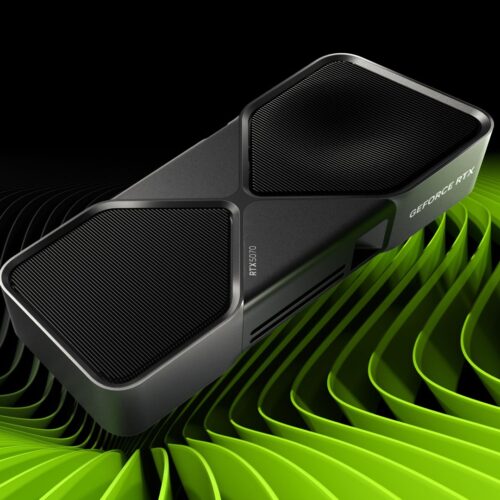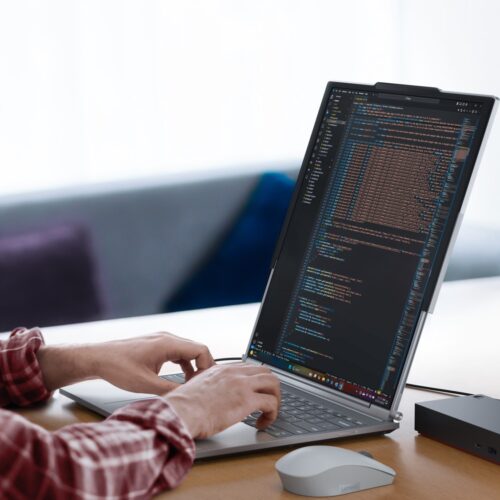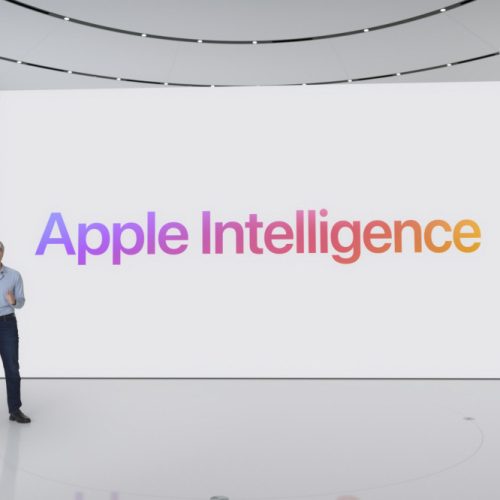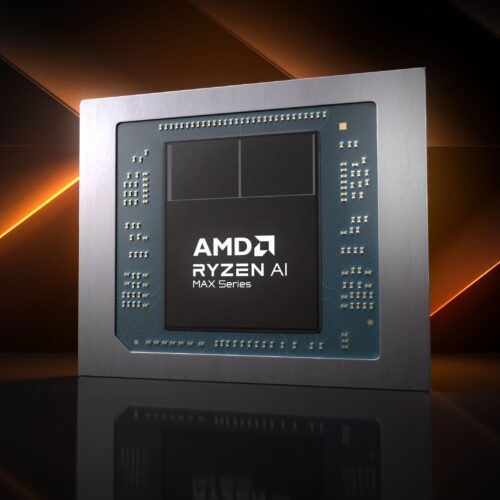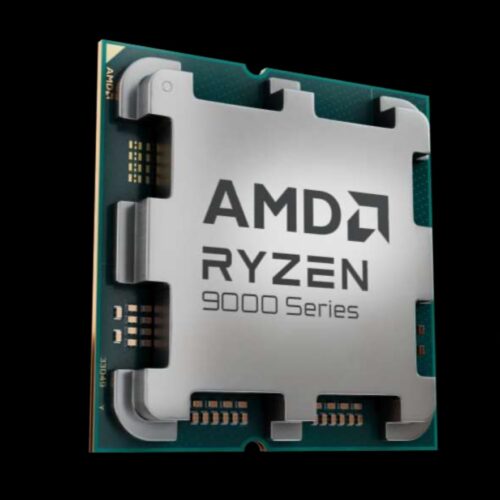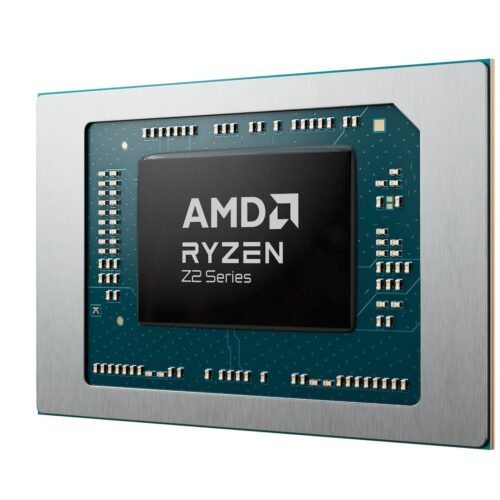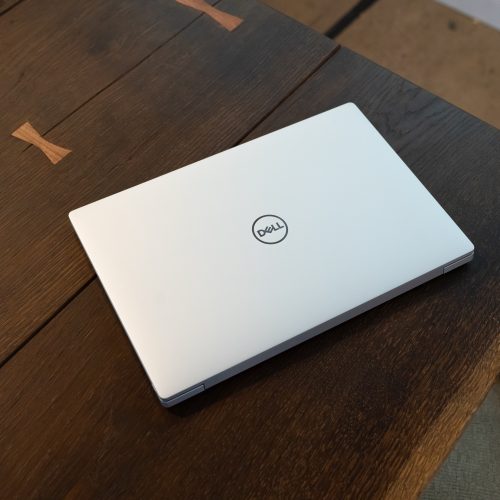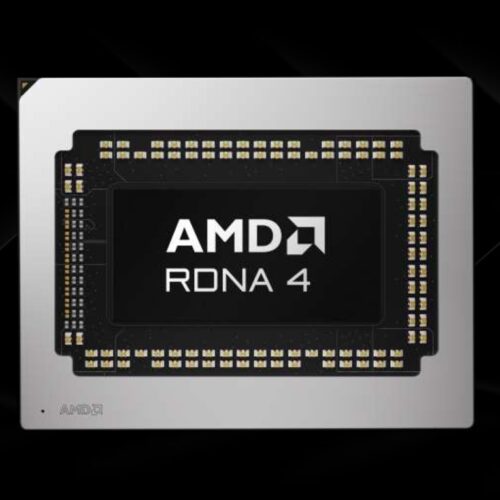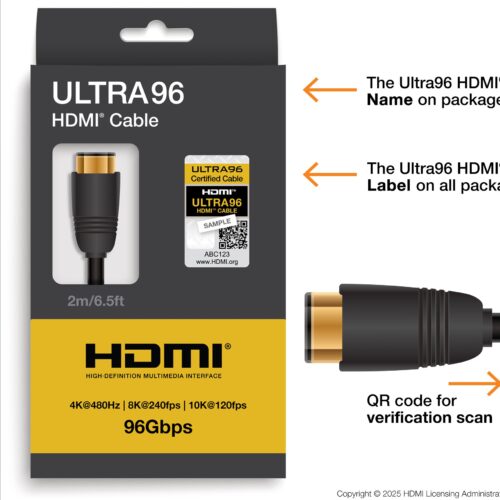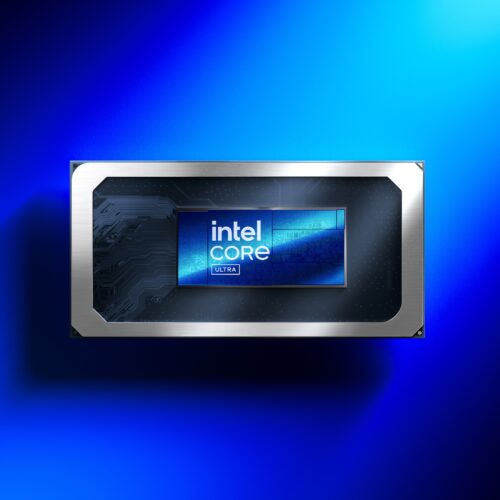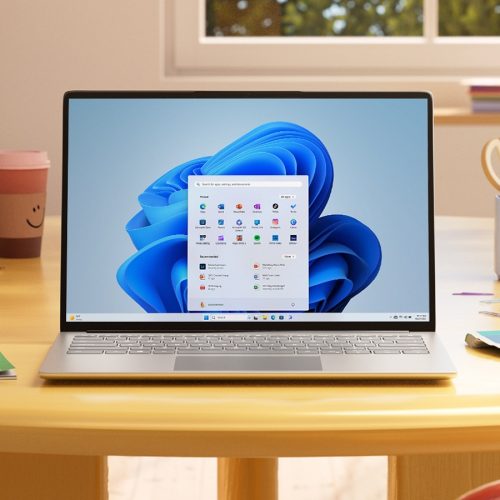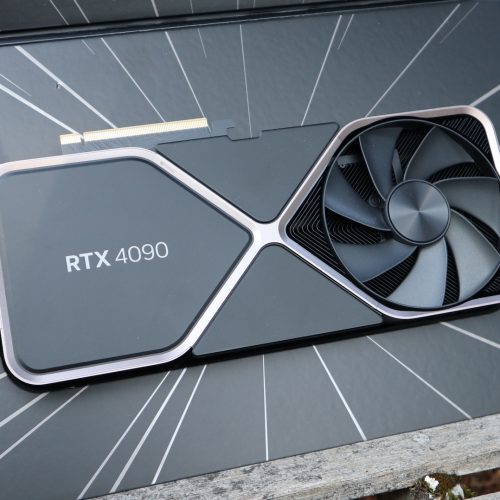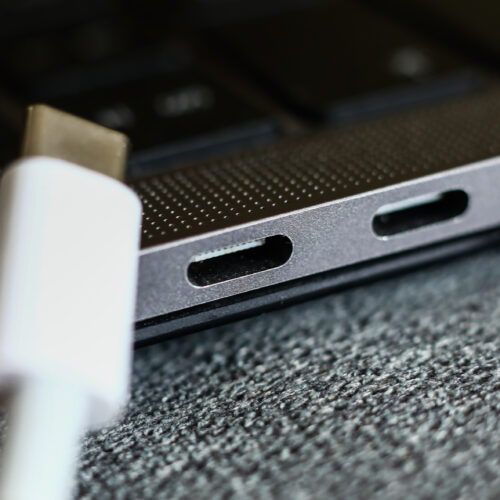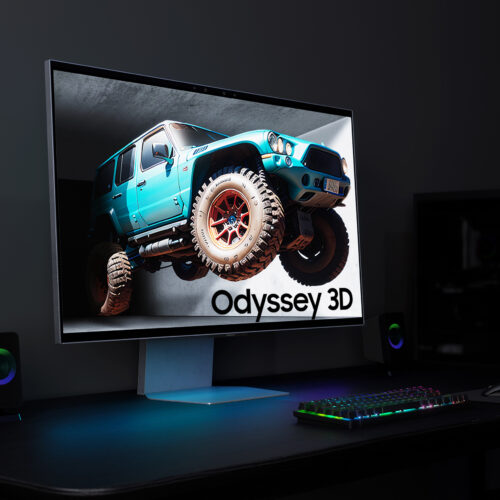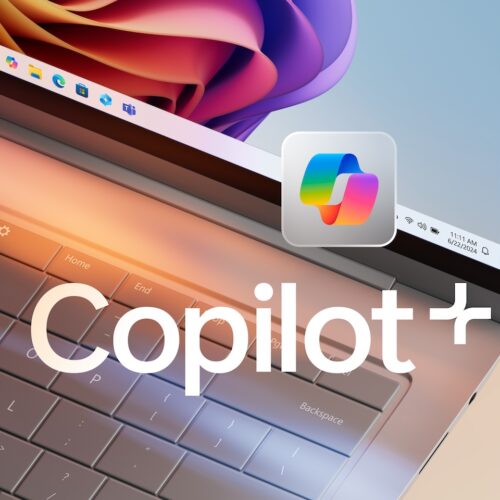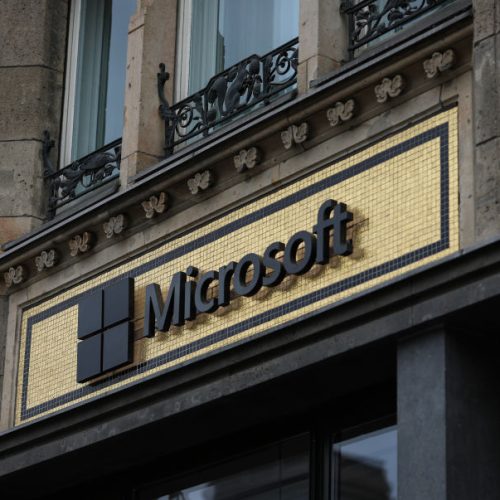- How I program with LLMs
Generative models can be powerfully useful—if you're willing to adapt your approach.
This article is a summary of my personal experiences with using generative models while programming over the past year. It has not been a passive process. I have intentionally sought ways to use LLMs while programming to learn about them. The result has been that I now regularly use LLMs while working, and I consider their benefits to be net-positive on my productivity. (My attempts to go back to programming without them are unpleasant.)
Along the way, I have found oft-repeated steps that can be automated, and a few of us are working on building those into a tool specifically for Go programming: sketch.dev. It’s very early, but so far, the experience has been positive.
Background
I am typically curious about new technology. It took very little experimentation with LLMs for me to want to see if I could extract practical value. There is an allure to a technology that can (at least some of the time) craft sophisticated responses to challenging questions. It is even more exciting to watch a computer attempt to write a piece of a program as requested and make solid progress.
- New GeForce 50-series GPUs: There’s the $1,999 5090, and there’s everything else
Nvidia leans heavily on DLSS 4 and AI-generated frames for speed comparisons.
Nvidia has good news and bad news for people building or buying gaming PCs.
The good news is that three of its four new RTX 50-series GPUs are the same price or slightly cheaper than the RTX 40-series GPUs they're replacing. The RTX 5080 is $999, the same price as the RTX 4080 Super; the 5070 Ti and 5070 are launching for $749 and $549, each $50 less than the 4070 Ti Super and 4070 Super.
The bad news for people looking for the absolute fastest card they can get is that the company is charging $1,999 for its flagship RTX 5090 GPU, significantly more than the $1,599 MSRP of the RTX 4090. If you want Nvidia's biggest and best, it will cost at least as much as four high-end game consoles or a pair of decently specced midrange gaming PCs.
- Lenovo laptop’s rollable screen uses motors to grow from 14 to 16.7 inches
Yes, there are still visible creases.
Lenovo announced a laptop today that experiments with a new way to offer laptop users more screen space than the typical clamshell design. The Lenovo ThinkBook Plus Gen 6 Rollable has a screen that can roll up vertically to expand from 14 inches diagonally to 16.7 inches, presenting an alternative to prior foldable-screen and dual-screen laptops.
 Here you can see the PC's backside when the screen is extended. Credit: Lenovo
Here you can see the PC's backside when the screen is extended. Credit: Lenovo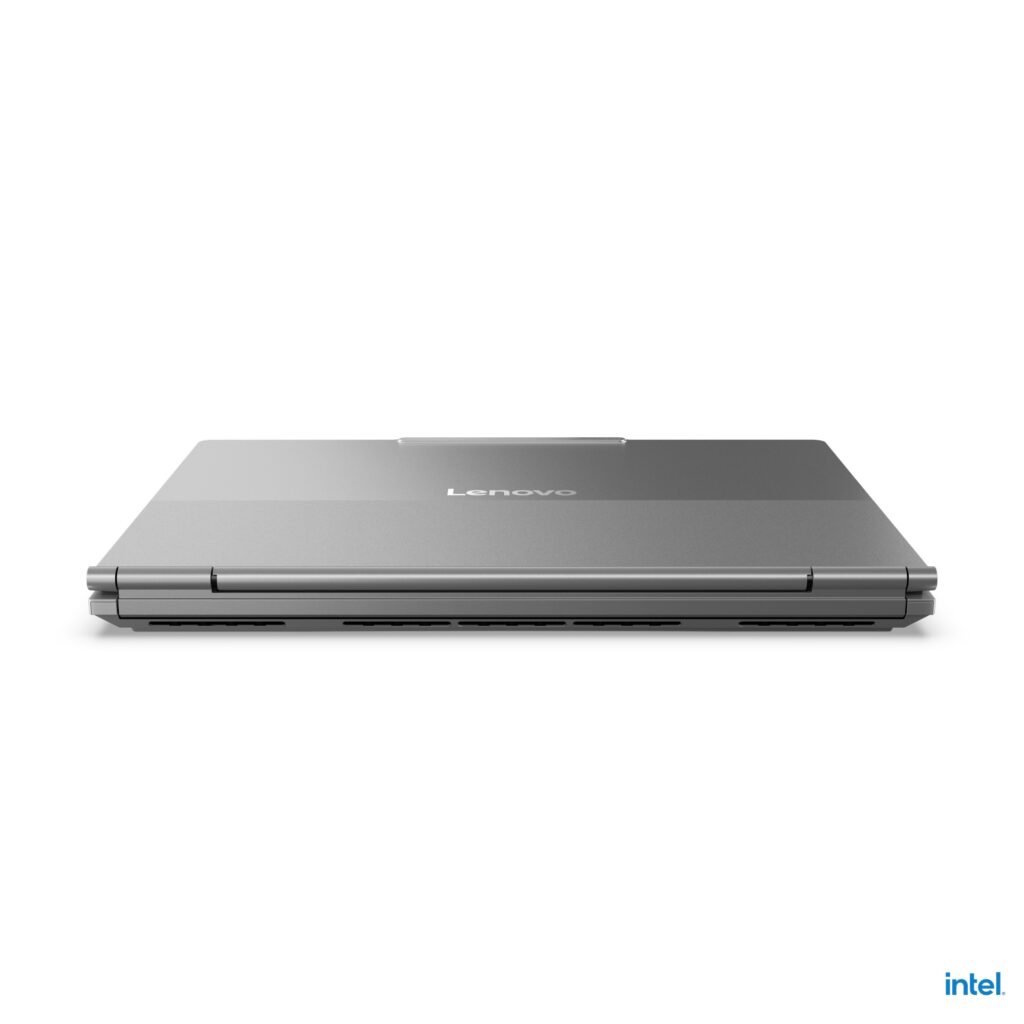 A look at the hinge. Credit: Lenovo
A look at the hinge. Credit: Lenovo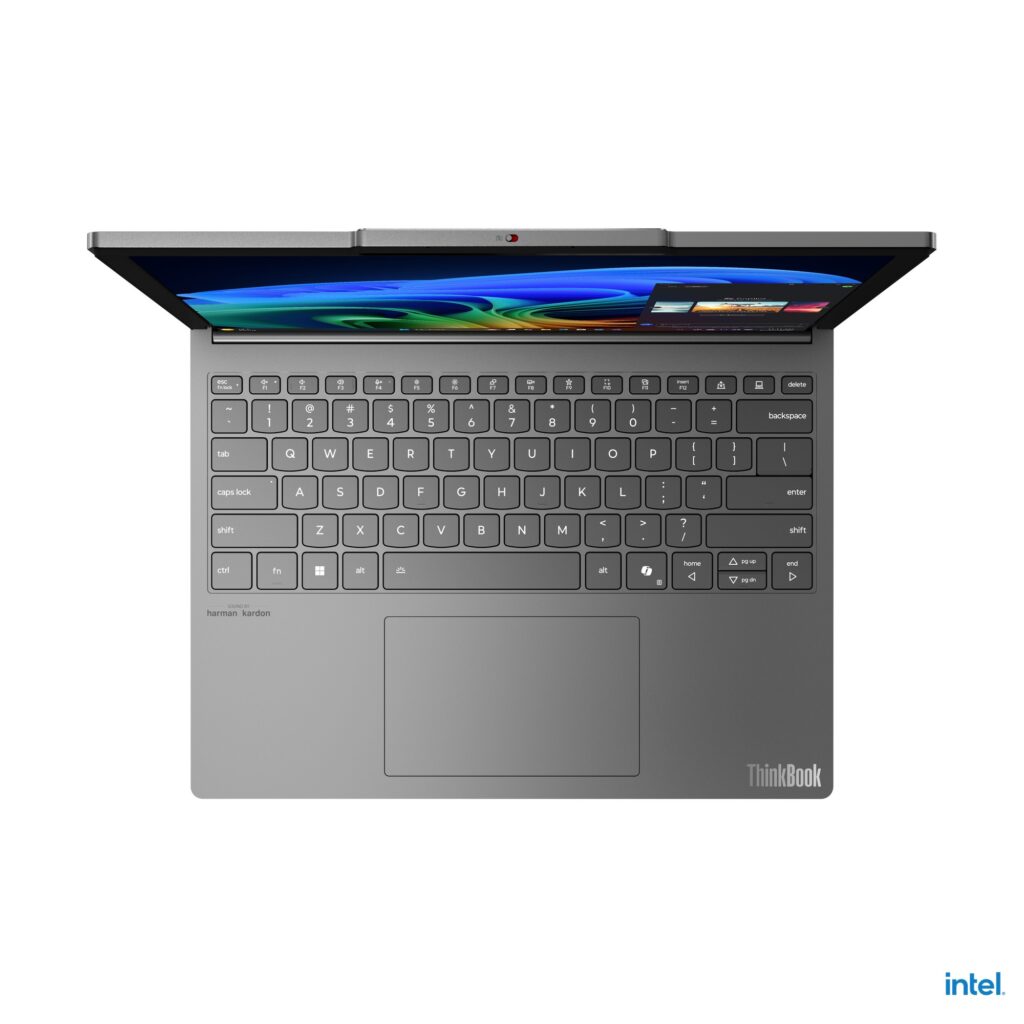 The keyboard includes a button for making the screen unroll. Credit: Lenovo
The keyboard includes a button for making the screen unroll. Credit: LenovoThe laptop, which Lenovo says is coming out in June, builds on a concept that Lenovo demoed in February 2023. That prototype had a Sharp-made panel that initially measured 12.7 inches but could unroll to present a total screen size of 15.3 inches. Lenovo's final product is working with a bigger display from Samsung Display, The Verge reported. Resolution-wise you're going from 2,000×1,600 pixels (about 183 pixels per inch) to 2,000×2,350 (184.8 ppi), the publication said.
Users make the screen expand by pressing a dedicated button on the keyboard or by making a hand gesture at the PC's webcam. Expansion entails about 10 seconds of loud whirring from the laptop’s motors. Lenovo executives told The Verge that the laptop was rated for at least 20,000 rolls up and down and 30,000 hinge openings and closings.
- Google Pixel 4a gets an unexpected update: Lower battery life
It's intentional, and eligible users can get cash or free battery replacements.
The Pixel 4a, a well-regarded release in Google's line of budget-minded phones with nice cameras and decent stock software, was not supposed to get any more updates. This week, it will receive a rather uncommon one—one that intends to lower its reported battery life.
The Pixel 4a, released in the summer of 2020, was discontinued at the end of 2022. It received its last official software update in the summer of 2023, followed by a surprise security update in November 2023. Throughout 2024, there were no updates. This week, owners of the 4a (and likely many former owners) are getting a new update, along with an email titled "Changes coming to your Pixel 4a."
The email addresses "an upcoming software update for your Pixel 4a that will affect the overall performance and stability of its battery." The automatic software update to Android 13 "introduces new battery management features to improve the stability of your device," which will "reduce your battery's runtime and charging performance."
- Apple will update iOS notification summaries after BBC headline mistake
It's unfortunately not possible for Apple Intelligence to make zero errors.
Apple plans to release a software update that is meant to help users understand better that its notification summaries are AI-generated and may contain errors, according to a recent BBC news story. The update is a response to reports that the summaries gave users misleading information about world events.
For example, one false summary suggested to at least one user that Luigi Mangione, the alleged murderer of UnitedHealthcare CEO Brian Thompson, had committed suicide. The notification in question was meant to summarize the most important tidbits from 22 BBC news app notifications, according to a widely circulated screenshot.
Apple hasn't publicly specified exactly what will be changed to better inform users—only that it will be a software change that will "further clarify" when the notifications have been generated via the feature that resides under the Apple Intelligence umbrella.
- Disney makes antitrust problem go away by buying majority stake in Fubo
Fubo to merge with giant it accused of trying to monopolize sports streaming.
Disney is buying Fubo and plans to merge the sports streaming platform with its Hulu + Live TV service, gaining 70 percent ownership of the company that up until today was suing it over antitrust concerns and allegations of anticompetitive practices.
According to Fubo’s announcement today, the unified company will be known as Fubo, and Fubo executives will run it. People will also continue to be able to subscribe to Fubo without subscribing to Hulu + Live TV and vice versa. Also part of the announcement is the revelation that Fubo has settled its antitrust lawsuit against Disney, Fox, and Warner Bros. Discovery (WBD) over Venu, a joint venture sports app that the companies plan to launch and that Fubo was seeking to block, citing the three firms' allegedly anticompetitive practices.
Fubo had previously claimed that Disney, Fox, and WBD had forced it to pay for irrelevant channels that don’t appeal to sports fans by bundling those networks with sports networks. Fubo’s lawsuit accused Disney and Fox of forcing it to spend millions on unwanted content and forcing it “to drop valuable channels” through price hikes.
- AMD’s new laptop CPU lineup is a mix of new silicon and new names for old silicon
New Ryzen AI CPUs boost speeds, but cheaper laptops get another Ryzen rebrand.
AMD's CES announcements include a tease about next-gen graphics cards, a new flagship desktop CPU, and a modest refresh of its processors for handheld gaming PCs. But the company's largest announcement, by volume, is about laptop processors.
Today the company is expanding the Ryzen AI 300 lineup with a batch of updated high-end chips with up to 16 CPU cores and some midrange options for cheaper Copilot+ PCs. AMD has repackaged some of its high-end desktop chips for gaming laptops, including the first Ryzen laptop CPU with 3D V-Cache enabled. And there's also a new-in-name-only Ryzen 200 series, another repackaging of familiar silicon to address lower-budget laptops.
Ryzen AI 300 is back, along with high-end Max and Max+ versions
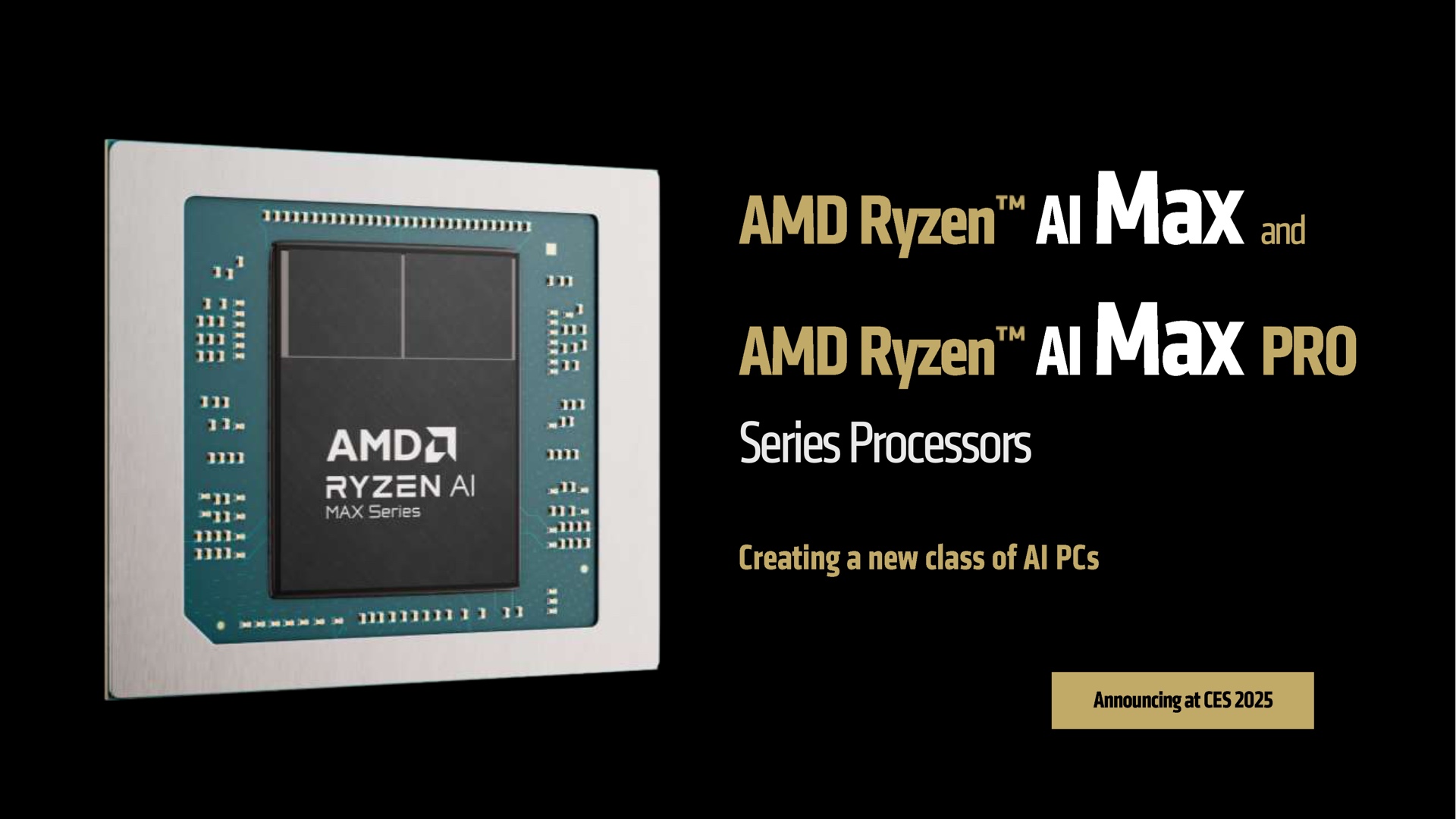 Ryzen AI is back, with Max and Max+ versions that include huge integrated GPUs.
Credit:
AMD
Ryzen AI is back, with Max and Max+ versions that include huge integrated GPUs.
Credit:
AMD
We came away largely impressed by the initial Ryzen AI 300 processors in August 2024, and new processors being announced today expand the lineup upward and downward.
- AMD launches new Ryzen 9000X3D CPUs for PCs that play games and work hard
Not much faster at games than 9800X3D, but with up to twice as many CPU cores.
AMD's batch of CES announcements this year includes just two new products for desktop PC users: the new Ryzen 9 9950X3D and 9900X3D. Both will be available at some point in the first quarter of 2025.
Both processors include additional CPU cores compared to the 9800X3D that launched in November. The 9900X3D includes 12 Zen 5 CPU cores with a maximum clock speed of 5.5 GHz, and the 9950X3D includes 16 cores with a maximum clock speed of 5.7 GHz. Both include 64MB of extra L3 cache compared to the regular 9900X and 9950X, for a total cache of 144MB and 140MB, respectively; games in particular tend to benefit disproportionately from this extra cache memory.
But the 9950X3D and 9900X3D aren't being targeted at people who build PCs primarily to game—the company says their game performance is usually within 1 percent of the 9800X3D. These processors are for people who want peak game performance when they're playing something but also need lots of CPU cores for chewing on CPU-heavy workloads during the workday.
- AMD’s new Ryzen Z2 CPUs boost gaming handhelds, if you buy the best one
Z2 Extreme is the only one that's faster than what AMD was offering before.
Nearly two years ago, AMD announced its first Ryzen Z1 processors. These were essentially the same silicon that AMD was putting in high-end thin-and-light laptops but tuned specifically for handheld gaming PCs like the Steam Deck and Asus ROG Ally X. As part of its CES announcements today, AMD is refreshing that lineup with three processors, all slated for an undisclosed date in the first quarter of 2025.
Although they're all part of the "Ryzen Z2" family, each of these three chips is actually much different under the hood, and some of them are newer than others.
The Ryzen Z2 Extreme is what you'd expect from a refresh: a straightforward upgrade to both the CPU and GPU architectures of the Ryzen Z1 Extreme. Based on the same "Strix Point" architecture as the Ryzen AI 300 laptop processors, the Z2 Extreme includes eight CPU cores (three high-performance Zen 5 cores, five smaller and efficiency-optimized Zen 5C cores) and an unnamed RDNA 3.5 GPU with 16 of AMD's compute units (CUs). These should both provide small bumps to CPU and GPU performance relative to the Ryzen Z1 Extreme, which used eight Zen 4 CPU cores and 12 RDNA 3 GPU cores.
- The end of an era: Dell will no longer make XPS computers
Dell won't make Precision or Inspiron PCs anymore, either.
After ditching the traditional Dell XPS laptop look in favor of the polarizing design of the XPS 13 Plus released in 2022, Dell is killing the XPS branding that has become a mainstay for people seeking a sleek, respectable, well-priced PC.
This means that there won't be any more Dell XPS clamshell ultralight laptops, 2-in-1 laptops, or desktops. Dell is also killing its Latitude, Inspiron, and Precision branding, it announced today.
Moving forward, Dell computers will have either just Dell branding, which Dell’s announcement today described as “designed for play, school, and work,” Dell Pro branding “for professional-grade productivity,” or be Dell Pro Max products, which are “designed for maximum performance." Dell will release Dell and Dell Pro-branded displays, accessories, and "services," it said. The Pro Max line will feature laptops and desktop workstations with professional-grade GPU capabilities as well as a new thermal design.
- New Radeon RX 9000 GPUs promise to fix two of AMD’s biggest weaknesses
Better ray tracing and ML-backed FSR upscaling could close the gap with Nvidia.
Nvidia is widely expected to announce specs, pricing, and availability information for the first few cards in the new RTX 50 series at its CES keynote later today. AMD isn't ready to get as specific about its next-generation graphics lineup yet, but the company shared a few morsels today about its next-generation RDNA 4 graphics architecture and its 9000-series graphics cards.
AMD mentioned that RDNA 4 cards were on track to launch in early 2025 during a recent earnings call, acknowledging that shipments of current-generation RX 7000-series cards were already slowing down. CEO Lisa Su said then that the architecture would include "significantly higher ray-tracing performance" as well as "new AI capabilities."
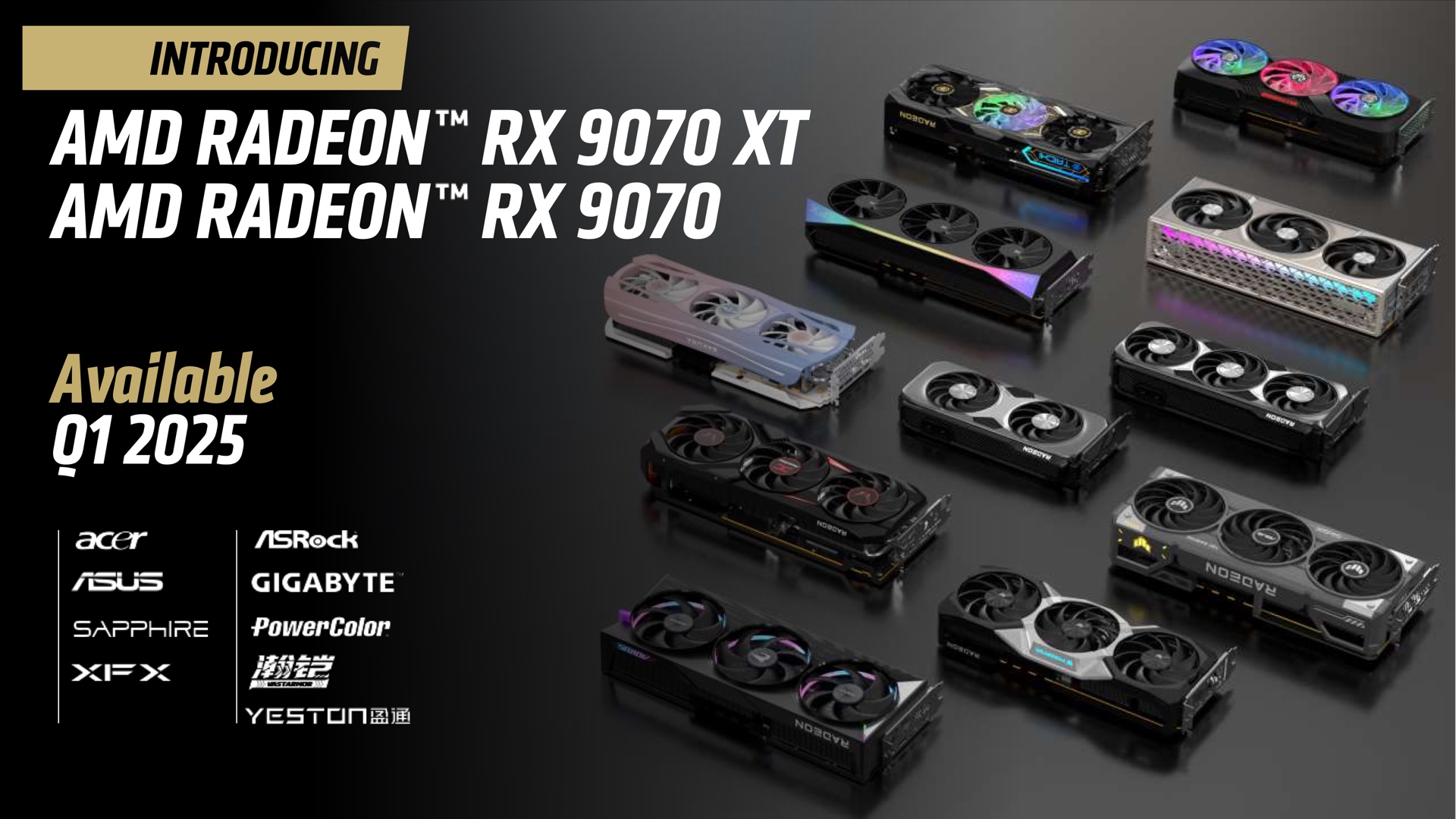 AMD's RDNA 4 launch will begin with the 9070 XT and 9070, which are both being positioned as upper-midrange GPUs like the RTX 4070 series.
Credit:
AMD
AMD's RDNA 4 launch will begin with the 9070 XT and 9070, which are both being positioned as upper-midrange GPUs like the RTX 4070 series.
Credit:
AMD
The preview the company is providing today provides few details beyond those surface-level proclamations. The compute units will be "optimized," AI compute will be "supercharged," ray-tracing will be "improved," and media encoding quality will be "better," but AMD isn't providing hard numbers for anything at this point. The RDNA 4 launch will begin with the Radeon RX 9070 XT and 9070 at some point in Q1 of 2025, and AMD will provide more information "later in the quarter."
- HDMI 2.2 will require new “Ultra96” cables, whenever we have 8K TVs and content
The physical connector is, confusingly but expectedly, the same.
We've all had a good seven years to figure out why our interconnected devices refused to work properly with the HDMI 2.1 specification. The HDMI Forum announced at CES today that it's time to start considering new headaches. HDMI 2.2 will require new cables for full compatibility, but it has the same physical connectors. Tiny QR codes are suggested to help with that, however.
The new specification is named HDMI 2.2, but compatible cables will carry an "Ultra96" marker to indicate that they can carry 96GBps, double the 48 of HDMI 2.1b. The Forum anticipates this will result in higher resolutions and refresh rates and a "next-gen HDMI Fixed Rate Link." The Forum cited "AR/VR/MR, spatial reality, and light field displays" as benefiting from increased bandwidth, along with medical imaging and machine vision.
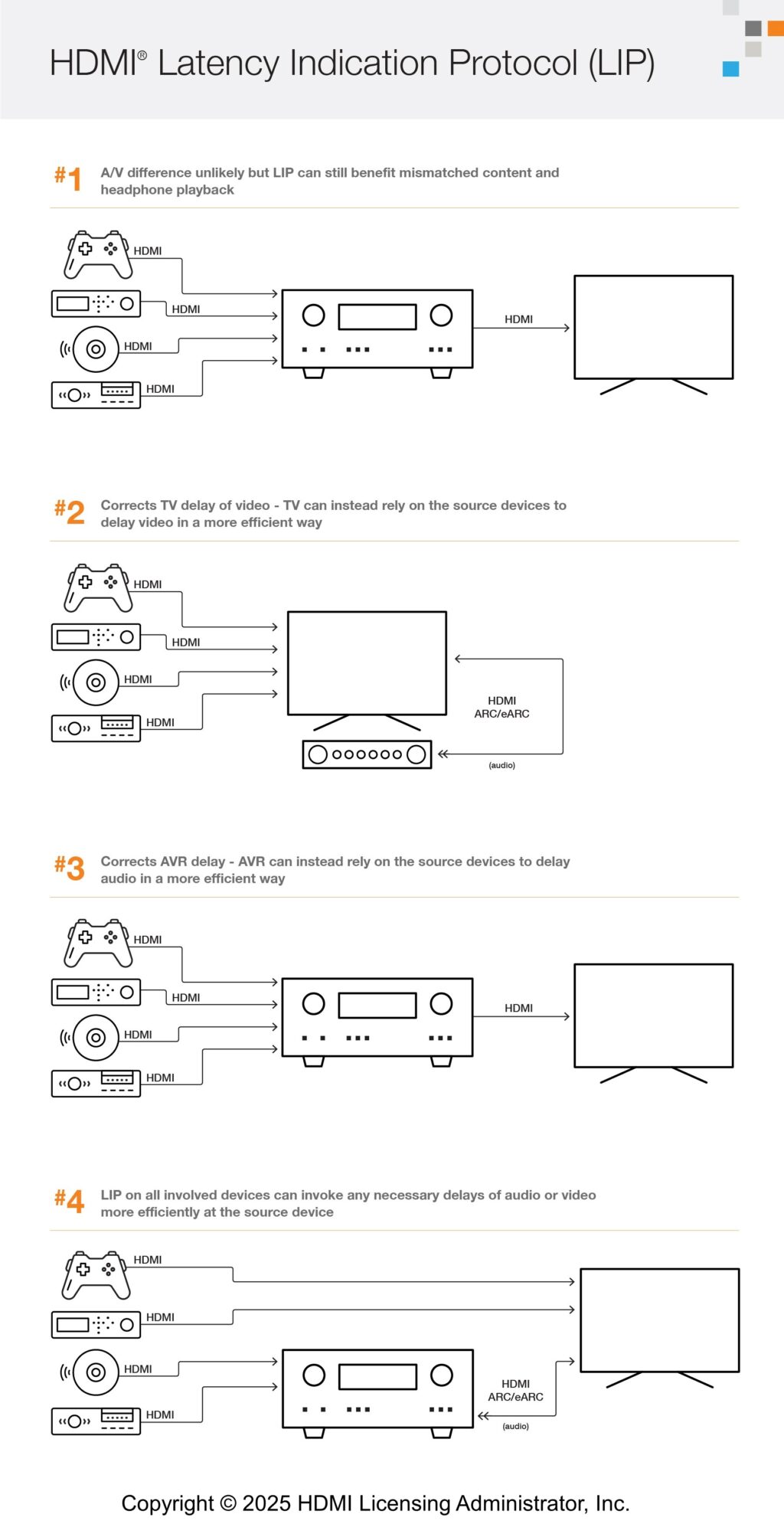 Examples of how HDMI 2.2's synchronization abilities will benefit home theaters.
Examples of how HDMI 2.2's synchronization abilities will benefit home theaters.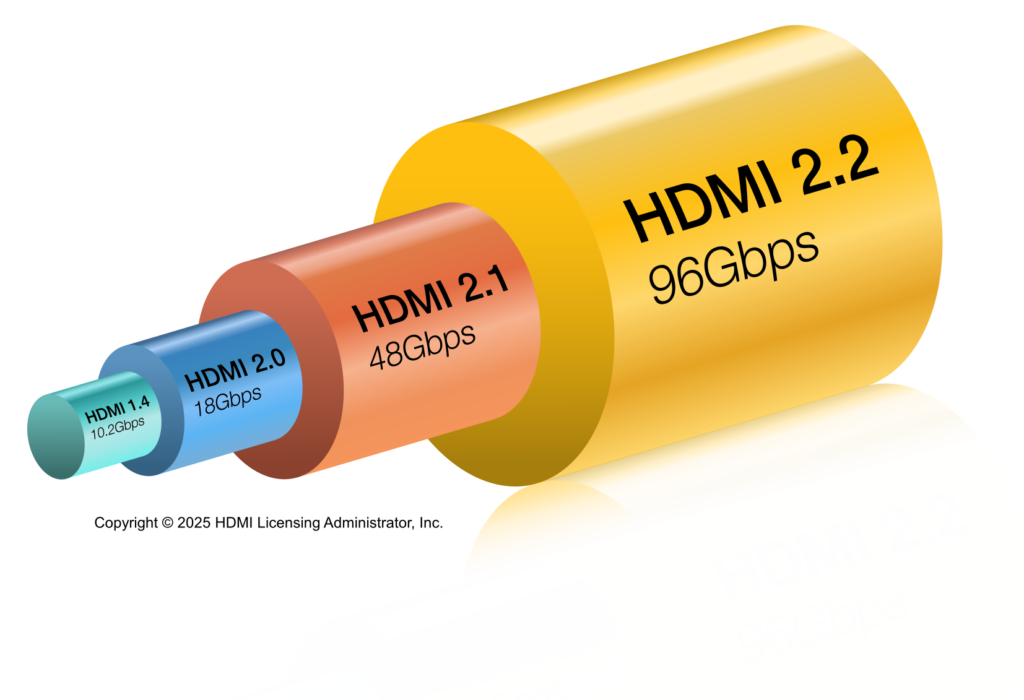 A visualization of how far HDMI has come in bandwidth, from 1.0 to 2.2.
A visualization of how far HDMI has come in bandwidth, from 1.0 to 2.2.A bit closer to home, the HDMI 2.2 specification also includes "Latency Indication Protocol" (LIP), which can help improve audio and video synchronization. This should matter most in "multi-hop" systems, such as home theater setups with soundbars or receivers. Illustrations offered by the Forum show LIP working to correct delays on headphones, soundbars connected through ARC or eARC, and mixed systems where some components may be connected to a TV, while others go straight into the receiver.
- Intel fills out Core Ultra 200 laptop lineup with hodgepodge of CPUs, GPUs, and NPUs
Core Ultra 200U, 200H, and 200HX will all fall short of Copilot+ compatibility.
Intel's Core Ultra 200 series is currently bifurcated between two architectures: Lunar Lake, which powers the Core Ultra 200V series of laptop chips; and Arrow Lake, which is included in the Core Ultra 200S desktop processors. Arrow Lake processors can include many more CPU cores, but only Lunar Lake uses Intel's latest GPU architecture and a neural processing unit (NPU) fast enough for Microsoft's Copilot+ functionality.
Intel is rounding out the rest of the Core Ultra 200 family today at CES, and the most important thing to know is that it's Arrow Lake, and not Lunar Lake, that is powering all of these new processors (though with a major caveat for 200U series chips, more on that in a bit).
This means that none of them are fast enough to earn the Copilot+ label or use upcoming features like Windows Recall, and none of them will have integrated graphics that are as good as the Core Ultra 200V. But it will make them a better fit for gaming laptops and other kinds of systems that prioritize CPU performance or include an external graphics card, as well as less-expensive ultraportable laptops.
- Microsoft would really like you to replace your old Windows 10 PCs this year
The carrot of "new features" and the stick of "no more updates for your old PC."
Last January at CES, Microsoft Chief Marketing Officer Yusuf Mehdi declared 2024 the "year of the AI PC." And whether you believe that prediction came true or not—many new PCs come with AI-accelerating neural processing units (NPUs) onboard, but far from all of them—you can't deny that Microsoft did try very hard to make it happen.
This year, Mehdi is back with another prediction: 2025 will be "the year of the Windows 11 PC refresh." This year is also, not coincidentally, the year that most Windows 10 PCs will stop receiving new security updates.
Mehdi's post includes few, if any, new announcements, but it does set the tone for how Microsoft is handling the sunsetting of Windows 10, attempting to strike a balance between carrot and stick. The carrots include Windows 11's new features (both AI and otherwise) and the performance, security, and battery life benefits inherent to brand-new PC hardware. The stick is that Windows 10 support ends in October 2025, and Microsoft is not interested in extending that date for the general public or in expanding official Windows 11 support to older PCs.
- Bob Dylan has some Dylanesque thoughts on the “sorcery” of technology
Making high-tech resolutions for 2025 with the help of Bob Dylan.
With the holiday release of the biopic A Complete Unknown, Bob Dylan is once again in the national spotlight. For me, the film provided a welcome excuse to read up on Dylan, who has always been a reputable source of enjoyably gnomic quotes, self-mythologizing, and enigmatic asides. Even in his old age, Dylan still delivers—especially when he gets going on technology, joysticks, and "dog ass" television programs.
Consider the interview Dylan gave to The Wall Street Journal in December 2022. (You can read the whole thing on BobDylan.com.) The piece was, notionally, about Dylan's book, The Philosophy of Modern Song. But it quickly morphed into a meditation on creativity in the era of on-demand streaming content, along with a discussion about how Dylan had spent his time during the COVID-19 lockdowns.
Dylan claims that he spent the pandemic replacing door panels on a ’56 Chevy, painting some landscapes, and re-reading “Rime of the Ancient Mariner” while pondering the mysteries of opium. Okay. He also had time left over to stream some TV:
- Rumors say next-gen RTX 50 GPUs will come with big jumps in power requirements
We'll likely find out more about Nvidia's next GPUs at CES next week.
Nvidia is reportedly gearing up to launch the first few cards in its RTX 50-series at CES next week, including an RTX 5090, RTX 5080, RTX 5070 Ti, and RTX 5070. The 5090 will be of particular interest to performance-obsessed, money-is-no-object PC gaming fanatics since it's the first new GPU in over two years that can beat the performance of 2022's RTX 4090.
But boosted performance and slower advancements in chip manufacturing technology mean that the 5090's maximum power draw will far outstrip the 4090's, according to leakers. VideoCardz reports that the 5090's thermal design power (TDP) will be set at 575 W, up from 450 W for the already power-hungry RTX 4090. The RTX 5080's TDP is also increasing to 360 W, up from 320 W for the RTX 4080 Super.
That also puts the RTX 5090 close to the maximum power draw available over a single 12VHPWR connector, which is capable of delivering up to 600 W of power (though once you include the 75 W available via the PCI Express slot on your motherboard, the actual maximum possible power draw for a GPU with a single 12VHPWR connector is a slightly higher 675 W).
- USB-C gets a bit more universal as the EU’s mandate goes into effect
Apple has already pulled devices to comply with the Common Charger Directive.
"It's time for THE charger," the European Commission posted to X on December 28, 2024. While the sentiment only applies to one continent (and not all of it) and only certain devices, the Common Charger Directive now in effect in the European Union suggests that far fewer gadgets will foist barrels, USB-micro, or proprietary plugs onto their owners.
The Common Charger Directive demands that a "USB-C receptacle" be equipped on "radio equipment" that is "equipped with a removable or embedded rechargeable battery" and "can be recharged via wired charging." If it has a battery and can be powered by up to 240 watts through a USB-C connection, it's generally subject to the EU's USB-C requirements. The directive applies to devices "placed on the market"—sent to a distributor or buyer—after December 28, even if they were initially designed and sold before that date.
Laptops get until April 2026 to comply, but most other things—phones, tablets, handheld gaming devices, computer accessories, and wireless headphones—will have to be powered by USB-C to be sold inside the EU from now on. Drones, for the time being, are largely unaddressed by the directive, but the EU will likely get around to them.
- Samsung is the next company to try to popularize 3D displays (again)
A new year, a new attempt at 3D displays.
Samsung is starting 2025 with a fresh attempt at popularizing 3D displays. Announced today, Samsung’s Odyssey 3D is the follow-up to prototypes that Samsung demoed at last year's CES technology trade show. This year, Samsung is showing off a final product, which is supposed to make 2D content look 3D.
Those who have dealt with 3D glasses may be relieved to hear that the Odyssey 3D doesn't require them. According to the South Korean company’s announcement, the monitor's use of a lenticular lens that is “attached to the front of the panel and its front stereo camera" means that you don't have to wear glasses to access the monitor's “customizable 3D experience.” Lenticular lenses direct different images to each eye to make images look three-dimensional. This is a notable advancement from the first 3D monitor that Samsung released in 2009. That display used Nvidia software and Nvidia shutter glasses to allow users to toggle between a 2D view and a 3D view through a few button presses and supported content.
Another advancement is the Odyssey 3D's claimed ability to use artificial intelligence “to analyze and convert 2D video into 3D.” We’ve recently seen similar technology from brands like Acer, which announced portable monitors in 2022 and then announced laptops that could convert 2D content into stereoscopic 3D in 2023. Those displays also relied on AI, as well as a specialized optical lens and a pair of eye-tracking cameras, to create the effect. But unlike Acer's portable monitors, Samsung claims that its monitor can make 2D content look like 3D even if that content doesn’t officially support 3D.
- You can love or hate AI, but it’s killed crappy 8GB versions of pricey PCs and Macs
Op-ed: AI has been a cure for $1,600 computers that start with 8GB of memory.
I'd describe myself as a skeptic of the generative AI revolution—I think the technology as it currently exists is situationally impressive and useful for specific kinds of tasks, but broadly oversold. I'm not sure it will vanish from relevance to quite the extent that other tech fads like the metaverse or NFTs did, but my suspicion is that companies like Nvidia and OpenAI are riding a bubble that will pop or deflate over time as more companies and individuals run up against the technology's limitations, and as it fails to advance as quickly or as impressively as its most ardent boosters are predicting.
Maybe you agree with me and maybe you don't! I'm not necessarily trying to convince you one way or the other. But I am here to say that even if you agree with me, we can all celebrate the one unambiguously positive thing that the generative AI hype cycle has done for computers this year: the RAM floor for many PCs and all Macs is now finally 16GB instead of 8GB.
Companies like Apple and Microsoft have, for years, created attractive, high-powered hardware with 8GB of memory in it, most egregiously in $1,000-and-up putative "pro" computers like last year's $1,599 M3 MacBook Pro or the Surface Pro 9.
- FTC launches probe of Microsoft over bundling
Redmond's packing of Office with security, cloud computing services under scrutiny.
The Federal Trade Commission is investigating Microsoft in a wide-ranging probe that will examine whether the company’s business practices have run afoul of antitrust laws, according to people familiar with the matter. In recent weeks, FTC attorneys have been conducting interviews and setting up meetings with Microsoft competitors.
One key area of interest is how the world’s largest software provider packages popular Office products together with cybersecurity and cloud computing services, said one of the people, who asked not to be named discussing a confidential matter.
This so-called bundling was the subject of a recent ProPublica investigation, which detailed how, beginning in 2021, Microsoft used the practice to vastly expand its business with the US government while boxing competitors out of lucrative federal contracts.
Website



